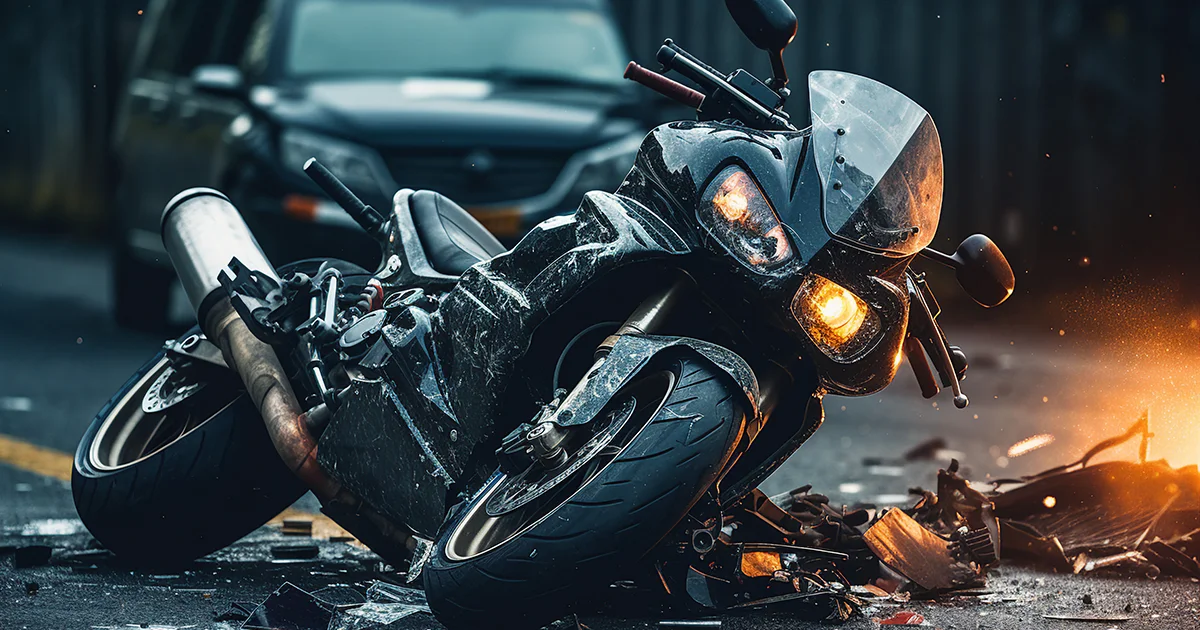Navigating Motorcycle Collision Cases

Motorcycle Collision Cases: How to Navigate Liability and Overcome Juror Bias
Motorcycle accidents often result in severe injuries or fatalities, making these cases particularly challenging in both the legal arena and in the court of public opinion. Motorcyclists are 28 times more likely to die and four times more likely to be injured in collisions than those in cars or trucks. Despite these statistics, jurors may hold biases that unjustly attribute blame to motorcyclists simply for their choice of vehicle. This blog will explore how attorneys can effectively navigate these cases by understanding liability and addressing juror bias.
The Bias Against Motorcyclists: A Legal Hurdle
Motorcyclists frequently face prejudice in courtrooms. A study revealed that some jurors believe motorcyclists “should expect to get injured” just by choosing to ride. This mindset can lead to unfair comparative liability judgments, where motorcyclists are blamed without supporting evidence. As legal advocates, addressing these biases head-on is crucial and ensuring that the jury bases its decisions on facts rather than preconceived notions.
Legal Rights and Responsibilities: What the Law Says About Motorcyclists
Motorcyclists have specific legal rights and responsibilities on the road, many of which are outlined in the California Vehicle Code. For instance, Vehicle Code Section 21658.1 legalizes lane splitting, which is defined as riding a motorcycle between rows of stopped or moving vehicles in the same lane. Commonly known as lane sharing or filtering, this practice is legal in California when done safely. Attorneys should be well-versed in these legal provisions to defend motorcyclists effectively.
Safe Lane Splitting: Guidelines Every Rider Should Follow
The California Highway Patrol (CHP) offers guidelines for safe lane splitting, which are crucial for motorcyclists to follow and for attorneys to understand. Key recommendations include:
- Maintaining a speed differential of no more than 10 miles per hour between the motorcycle and surrounding traffic.
- Preferably splitting between the #1 and #2 lanes, where it is generally safer.
- Considering environmental factors such as lane width, vehicle size, and lighting conditions.
Educating Other Drivers: A Key to Safer Roads
To prevent accidents, it’s essential to educate other drivers about their responsibilities when sharing the road with motorcyclists. Important rules include:
- Lane splitting by motorcycles is legal in California and should not be discouraged by motorists.
- Blocking or impeding a motorcyclist is illegal and can lead to severe penalties.
- Drivers should avoid distractions, check mirrors and blind spots, and always signal intentions before changing lanes or merging.
Leveraging these 4 California Vehicle Codes in Legal Proceedings
Citing the California Vehicle Code during a trial can significantly strengthen a case. Relevant sections include:
- §21658: Requires vehicles to stay within a single lane unless it is safe to change lanes.
- §21703: Prohibits following another vehicle too closely, considering traffic and road conditions.
- §22107: Mandates that vehicles must turn only when it is safe and after giving an appropriate signal.
- §23123: Bans the use of handheld phones while driving.
The Power of Judicial Notice in Motorcycle Collision Cases
Judicial notice is a valuable tool in these cases. According to California Evidence Code Section 451, courts must take judicial notice of public statutory laws. When a judge cites relevant Vehicle Code sections, it can add significant weight to the arguments presented and reinforce the evidence before the jury. Attorneys should not hesitate to use this strategy to emphasize the legality and rights of motorcyclists.
Debunking Comparative Fault Arguments
Motorcyclists often face claims of comparative fault, particularly regarding their speed and maneuverability. It’s essential to counter these arguments by demonstrating the motorcyclist’s adherence to safety protocols and highlighting the defendant’s failure to follow traffic laws. By presenting clear evidence and expert testimony, attorneys can effectively challenge these unfounded claims.
Conclusion: Advocating for Justice in Motorcycle Collision Cases
Motorcycle collision cases require a thorough understanding of both the law and the biases that motorcyclists may face. By educating jurors, leveraging the California Vehicle Code, and using judicial notice effectively, attorneys can advocate for the rights of motorcyclists and help secure fair outcomes for their clients.
For more information or legal assistance, visit The Arnold Law Firm or call (916) 777-7777. Our team is dedicated to fighting for the rights of motorcyclists and ensuring they receive the justice they deserve.

